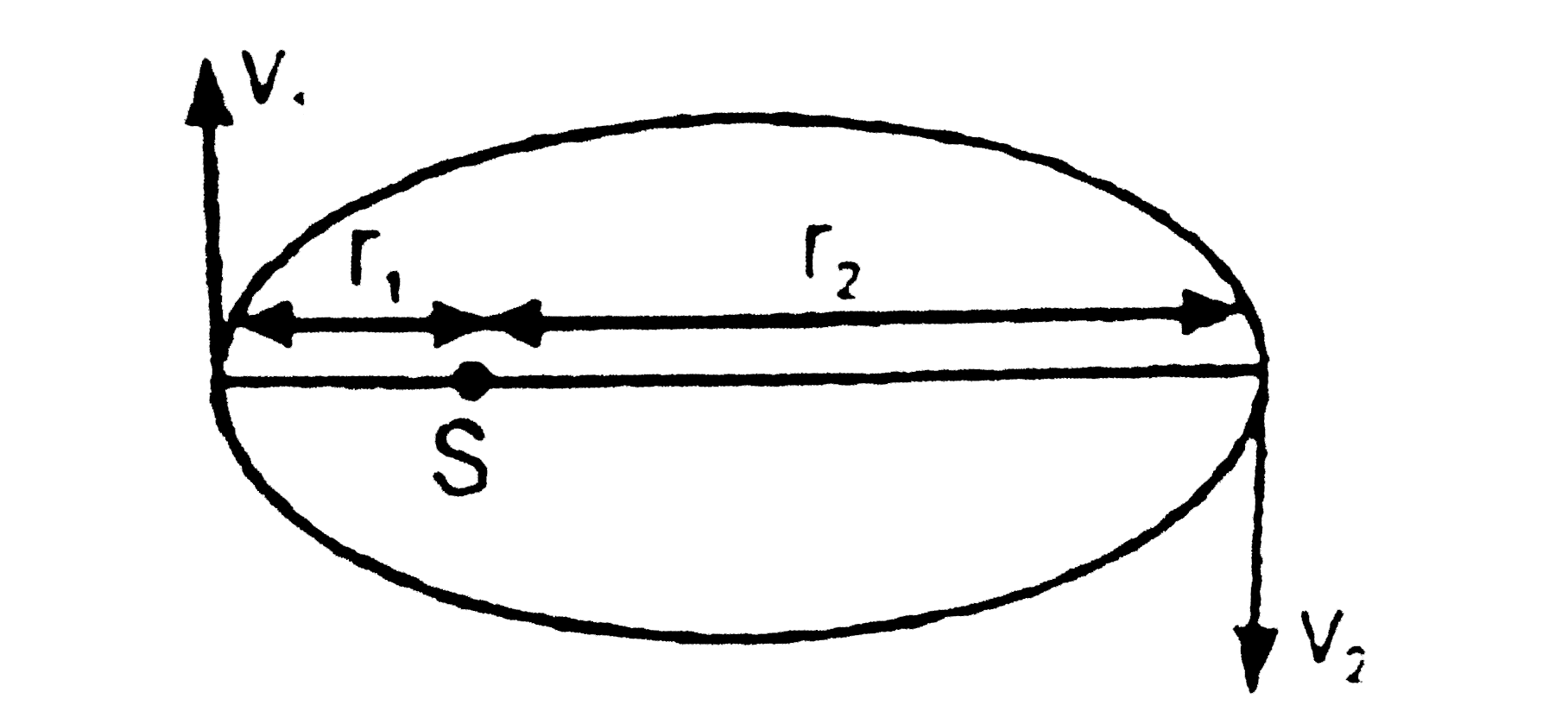What is the direction of areal velocity of the earth around the sun ? Solution in Gujrati
⇒ Areal velocity,
dAdt=L2m=r×mv2m=12(r×v)
where L is the angular momentum and m is the mass of the earth.
Hence, the direction of areal velocity (dAdt) the direction of (r×v).
Topper's Solved these Questions
- BOOK - KUMAR PRAKASHANCHAPTER - GRAVITATIONEXERCISE - Section - D NCERT Exemplar Solutions ( Short Answer Type Question )6videos
GRAVITATION
- BOOK - KUMAR PRAKASHANCHAPTER - GRAVITATIONEXERCISE - Section - D NCERT Exemplar Solutions (Long Answer Type Question )5videos
GRAVITATION
- BOOK - KUMAR PRAKASHANCHAPTER - GRAVITATIONEXERCISE - Section - D NCERT Exemplar Solutions (MIultiple Choice Questions (More than one options) )1videos
GRAVITATION
- BOOK - KUMAR PRAKASHANCHAPTER - LAW OF MOTIONEXERCISE - (QUESTION PAPER) SECTION-D1videos
LAW OF MOTION
Similar Questions
Mean solar day is the time interval between two successive noon when sun passes through zenith point (meridian). Sidereal day is the time interval between two successive transit of a distant star through the zenith point (meridian). By drawing appropriate diagram showing the earth's spin and orbital motion, show that mean solar day is 4 min longer than the sidereal day. In other words, distant stars would rise 4 min early every successive day. As per diagram, the earth moves from the point P to Q in one solar day.
01:49View SolutionA star like the sun has several bodies moving around it at different distances. Consider that all of them are moving in circular orbits. Letr be the distance of the body from the centre of the star and let its linear velocity be v, angular velocity , ω kinetic energy K, gravitational potential energy U, total energy E and angular momentum I. As the radius r of the orbit increases, determine which of the above quantities increase and which ones decrease. As shown in figure, where a body of mass m is revolving around a star of mass M. Linear velocity of the body,
00:41View SolutionWhich of the following options are correct?
02:39View SolutionA 70 kg man stands in contact against the inner wall of a hollow cylindrical drum of radius 3 m rotating about its vertical axis with 200 rev/min. The coefficient of friction between the wall and his clothing is 0.15. What is the minimum rotational speed of the cylinder to enable the man to remain stuck to the wall (without falling) when the floor is suddenly removed ?
02:55View SolutionThe areal velocity of a planet around the earth is constant. Which law is this?
View Solution(a) What are the units of areal velocity? (b) if distance of earth from the sun were to increase, what will happen to number of days in an year?
03:30View SolutionWhat is the direction of areal velocity of the earth around the sun?
01:39View SolutionA planet is revolving in an elliptical orbit around the sun as shown in the figure. The areal velocity (area swapped by the radius vector with respect to sun in unit time) is:
 View Solution
View SolutionAssertion : Areal velocity of a planet around of surface area and density is same for two planets, escape velocities will be same for both Reason : Areal velocity = (L)/(2m) , Where L is angular momentum of planet about centre of sun.
02:31View SolutionIf the angular momentum of a planet of mass m, moving around the Sun in a circular orbit is L, about the center of the Sun, its areal velocity is :
02:59View SolutionAccording the Kepler's law, the areal velocity of a planet around the sun, always
02:56View SolutionAssuming the earth's orbit around the sun to be circular, show that the area swept by its radius vector in unit time (areal velocity of the earth) is a constant.
03:40View SolutionThe areal velocity of the planets revolving around the sun is ………….. .
02:08View SolutionWhat is the direction of areal velocity of the earth around the sun?
06:37View SolutionIn planetary motion the areal velocity of position vector of a planet depends on angular velocity (m) and the distance of the planet from sup (r). If so the correct relation for areal velocity is
06:01View Solution

